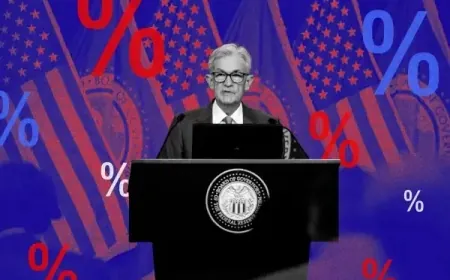Crypto Industry Strengthens with Privacy Protocols, Stablecoins, and Institutional Investment
Crypto markets grow more stable with privacy protocols, transparent stablecoins, and institutional investment, creating safer, regulated digital finance.

SINGAPORE — The cryptocurrency market is entering a new phase of development, marked by measurable improvements in privacy protocols, transparent stablecoin systems, and increasing participation from institutional investors. These developments signal that digital assets are moving toward more predictable, regulated, and functional applications in global finance.
Over the past decade, cryptocurrencies have been largely associated with speculative trading and extreme price volatility. Today, that landscape is changing. Institutional investors, including banks, hedge funds, and corporate treasuries, are demanding systems that can handle confidential transactions without sacrificing auditability or compliance. Technologies like the Nightfall protocol have emerged to meet these requirements, allowing Ethereum-based transactions to remain private while providing verifiable records for auditors and regulators. This ensures that organizations can operate within legal frameworks while using blockchain networks for financial operations.
Stablecoins are also evolving to meet the needs of both investors and regulators. Traditional stablecoins relied on centralized reserves, creating concerns about transparency and reserve management. Newer stablecoins now feature on-chain reporting of collateral, governance structures that allow token holders to monitor decisions, and mechanisms that distribute rewards to network participants based on their contributions. These measures reduce operational risk, improve transparency, and make stablecoins a viable medium for investment and payments.
Institutional capital is reshaping cryptocurrency markets. Unlike earlier investment cycles driven primarily by short-term speculation, hedge funds, pension funds, and insurance companies now evaluate token economics, governance structures, and reserve management before committing funds. This approach has contributed to more stable markets, reduced extreme price swings, and increased investor confidence in digital assets.
The integration of cryptocurrency with traditional financial infrastructure is becoming more pronounced. Banks are exploring blockchain technology to improve settlement times and reduce costs. At the same time, cryptocurrency firms are adopting compliance standards that align with institutional expectations, including identity verification, anti-money-laundering protocols, and regular reporting. This convergence allows both sectors to operate under comparable standards, enhancing the reliability of digital finance.
Global adoption is also rising. Consumers and businesses are increasingly using stablecoins for payments, cross-border transfers, and access to digital dollars outside traditional banking systems. The transparency provided by on-chain governance, combined with privacy protections and regulatory oversight, ensures that these transactions are secure and auditable. In addition, these innovations create opportunities for financial inclusion in regions with limited banking infrastructure.
Security remains a priority. As cryptocurrencies gain institutional adoption, the potential impact of cyberattacks grows. Exchanges, wallets, and smart contracts are implementing stronger protections against hacking, while governance mechanisms and audit procedures are being improved to prevent misuse or mismanagement of assets. Regular audits, third-party security assessments, and protocol-level safeguards are becoming standard across major blockchain networks.
Regulatory clarity is improving, though differences remain across jurisdictions. Some countries have established detailed rules for stablecoins, including reserve verification, reporting obligations, and governance transparency. Others are developing frameworks for institutional participation and digital asset custody. Cryptocurrency firms operating internationally must navigate these regulatory variations while ensuring compliance in all markets, which has led to the emergence of specialized legal and compliance teams within blockchain companies.
The market impact of these changes is visible in trading behavior. Stablecoins with transparent governance and verifiable reserves have experienced lower volatility and wider adoption for payments and treasury management. Institutional participation has increased trading volumes of major cryptocurrencies on regulated exchanges, while speculative retail trading has decreased as professional investors take a larger share of the market. These trends contribute to market stabilization and a more predictable environment for all participants.
Blockchain networks are also adopting technological improvements to support institutional needs. Privacy-preserving protocols, automated compliance checks, and smart contract standards are becoming widespread. These innovations allow institutions to integrate cryptocurrencies into their financial operations while reducing operational risk and ensuring accountability. In particular, protocols that combine confidential transactions with verifiability are attracting significant attention from corporate and government entities seeking to leverage blockchain without compromising regulatory requirements.
Stablecoin adoption demonstrates the practical benefits of these innovations. Second-generation stablecoins provide a transparent and auditable framework for managing digital assets. Network participants can track reserves, verify governance decisions, and receive rewards based on their contributions. This system encourages trust and engagement from both retail users and professional investors. Furthermore, these coins are increasingly being used for cross-border payments, reducing reliance on traditional financial intermediaries and lowering transaction costs.
The evolving infrastructure is also attracting institutional partnerships. Major banks and investment firms are collaborating with blockchain projects to deploy compliant digital asset solutions for payments, treasury management, and investment portfolios. These partnerships often involve integrating privacy protocols, multi-signature custody solutions, and real-time auditing tools to satisfy regulatory standards. Such collaborations indicate that cryptocurrency is no longer just a speculative asset; it is becoming a functional component of institutional finance.
Despite progress, challenges remain. Cybersecurity threats continue to pose risks, especially to exchanges, wallets, and decentralized finance protocols. Legal and regulatory frameworks are still inconsistent across regions, requiring firms to maintain sophisticated compliance programs. Additionally, widespread adoption depends on education and outreach, ensuring that users understand the functionality, risks, and protections inherent in modern blockchain networks.
The current trajectory demonstrates that cryptocurrencies are moving from a speculative market into a structured and functional financial ecosystem. Privacy-focused protocols and transparent stablecoins provide the infrastructure necessary for secure transactions and investor protection. Institutional investment contributes to market stability and long-term growth. Regulatory alignment improves accountability and reduces operational risk. Collectively, these factors are creating a cryptocurrency environment where digital assets can be used reliably for payments, investment, and treasury operations.
The recent adoption of protocols like Nightfall and the rise of second-generation stablecoins are having a tangible impact on the cryptocurrency market. Banks and hedge funds are now executing confidential blockchain transactions while meeting compliance requirements, and stablecoins with verifiable reserves are being integrated into corporate treasury operations. Exchanges and institutional investors report reduced volatility in trading due to these systems, while regulators note improved transparency in audit reporting. These developments indicate that cryptocurrencies are no longer purely speculative assets but are increasingly being used for cross-border payments, corporate liquidity management, and institutional investment, marking a clear shift toward a regulated, operationally stable market.
Also Read: Bitcoin Reaches Record High Above $125,000, Market Value Nears $2.5 Trillion





























































